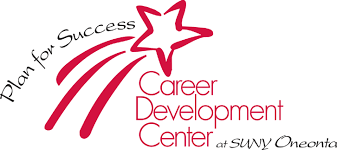
Zarina Sotero, Staff Writer |
It’s around that time of the semester when people start looking at internships or future jobs. The process is long, hard and frustrating. The first step in this process is creating a top-notch resumé to ensure you have a shot at getting that internship or job; however, this could be the hardest step of them all. Thankfully, our college has a great team at the Career and Development Center (CDC) that specializes in helping with resums, interviews and more. I had the pleasure of attending an informational session about resumés and interviewing tips hosted by the Communication Arts Society and Kimberly Adler from the CDC, who gave very helpful pointers.
A resumé is preferably one page—but no longer than two—and should offer a clear outline of who you are, what you’ve done, where you’ve been and where you hope to go. First and foremost, the format of your resumé is one of the most important factors. A recruiter takes between six and 30 seconds to read a resumé, so formatting can really help your application. Adler advised to create your resumé from scratch and to never use a predesigned resume template. Templates should be avoided for several reasons including the fact that resumé templates may not make the most use of the space you have on a page. They can also throw off the Applicant Tracking System, which is a software that companies who receive a vast number of applications use to search for specific language within an application. Lastly, a template can make it difficult for someone to quickly discern your relevant skills and experience. Adler also advised to use a font that is easy to read as well as specific font sizes for different parts of your resumé. She recommended these fonts: Times New Roman, Arial, Calibri, Cambria, Georgia and Garamond. For font sizes she recommends size 18 font for your name, size 14 font for headings and size 12 fonts for bullet points. Adler’s final formatting pointer was to use narrow margins to maximize space on your resumé.
Another important factor to consider for your resumé is, of course, the content you provide. A basic resumé contains an objective or a summary statement, education history, awards/honors, experience, activities and skills. Experience can be categorized in various headings such as related experience, other experience, leadership experience and volunteer experience. The information for which you provide under each heading may change per internship or job you are applying for. You should further tailor your resumé to fit each individual position.
Adler gave numerous tips for the interviewing process, something many people stress over. One should “dress to impress” for their interview, no matter how current employees may dress in the workplace. Adler also advises to do your research about the company and research common questions that the company may ask during interviews. It may also do you good to practice speaking in the mirror to boost your confidence in preparation for speaking at the actual interview. Conduct a mock interview session if you need to, whether it be with a parent or a friend. You can also visit the CDC for one. Another very important tip is to be prepared to prove your skills during an interview. Adler gave her own anecdote about previous interviews where she was given tests to prove her skills at Microsoft Excel.
Students are always welcome to visit the CDC for any concerns towards internships, jobs, resumés, etc.. They are
located in 110 Netzer, and their office hours are Monday through Friday from 8:00 a.m. to 4:30 p.m.. Students
and alumni alike can contact them through email at [email protected] or give them a call at (607) 436-2534.
Leave a Reply